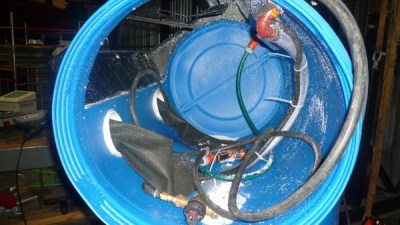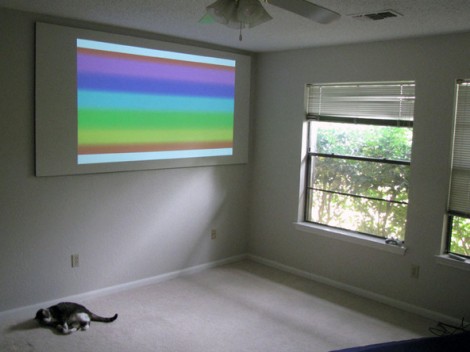Most people have heard of sand blasting, a process used for cleaning parts by spraying a high pressure air and sand mixture. At this speed, the sand becomes abrasive and will remove paint, rust and general gunk leaving a clean surface behind. There is one downside to the process, breathing the silica dust created by the sand blasting process can lead to a lung disease called silicosis, which is not curable and can even lead to death.
[Roger] wanted to clean his motorcycle parts and decided to build a wet media blasting cabinet. Unlike sand blasting, wet media blasting mixes the cleaning media with water instead of air. The media and water slurry is sprayed at the part needing cleaning and has the same effect as sand blasting without creating any dust.
 As you can clearly see from the image, the main blasting chamber is made from a 55 gallon plastic drum. It even has a removable lid on one side to make loading in parts easy. A large hole was cut into the drum in order to install a window. Look close – there is even a wind shield wiper from a car installed on the inside of the window to aid in seeing the part being cleaned!
As you can clearly see from the image, the main blasting chamber is made from a 55 gallon plastic drum. It even has a removable lid on one side to make loading in parts easy. A large hole was cut into the drum in order to install a window. Look close – there is even a wind shield wiper from a car installed on the inside of the window to aid in seeing the part being cleaned!
Underneath the blasting chamber is another plastic drum cut in half. This serves as a slurry tank. A regular pool pump is used to both agitate the slurry mixture and power the spray nozzle. Overall, [Roger] is happy with his blast cabinet made from found parts and says it has become his all-time favorite cleaning device. He says that the part surface finish obtained was well worth the effort building the blast cabinet.












